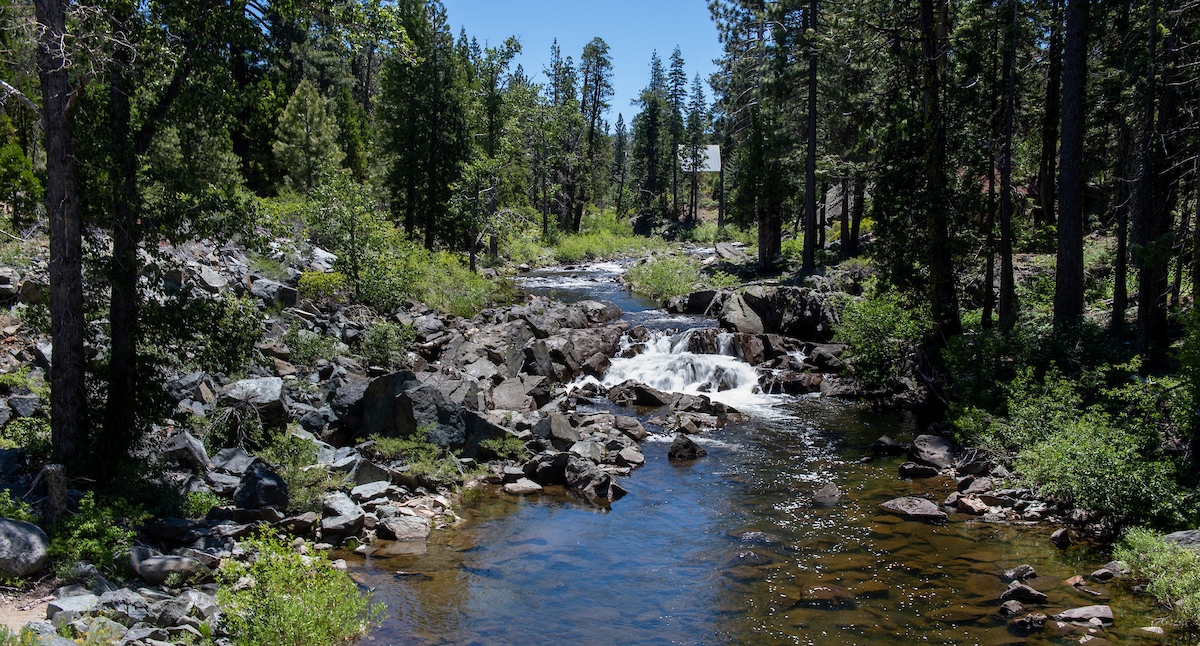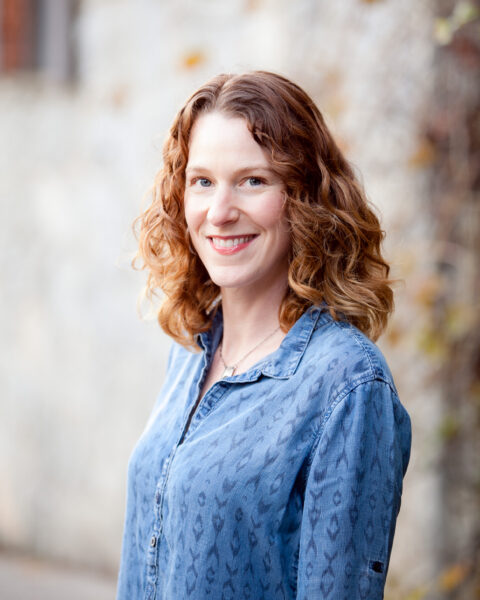
The mission of the South Yuba River Citizens League (SYRCL – pronounced circle) is to unites the community to protect and restore the Yuba River watershed. Originally founded in 1983 in an effort to protect the river from dams, SYRCL ultimately won permanent protections for 39 miles of the South Yuba River under California’s Wild and Scenic Rivers Act. Today, SYRCL keeps its 3,500 members and 1,300 active volunteers engaged with a variety of innovative programs, including river ambassadors, educational programs for students, citizen science opportunities, and a film festival, as well as watershed and salmon restoration projects. SYRCL also retains their advocacy role with actions such as opposing the Idaho-Maryland mine and working for fish passage at Daguerre Point Dam.
SYRCL’s Executive Director Melinda Booth has been at the helm since 2017. She has over 18 years experience in environmental conservation and advocacy, focusing on saving iconic species like bears, wolves, and salmon, keeping bears alive and wild in the Tahoe basin, and helping to reintroduce the California Condor back to the wild. I asked Melinda about SYRCL’s work in the Yuba watershed, and how SYRCL keeps its membership engaged.
How is SYRCL working to protect the South Yuba River watershed?
SYRCL takes a diverse approach to protecting and restoring the Yuba River watershed; we engage in education, outreach, monitoring, and restoration efforts, as well as utilizing policy and advocacy strategies. From an advocacy perspective, our goal is to be “at the ready” for threats that arise in our watershed that need us to be the voice for the environment. Over the years, those issues have varied greatly from advocating to keep our local State Parks open when threatened with closure to litigation—a tool we rarely implement but are willing to do so when no other option is left.
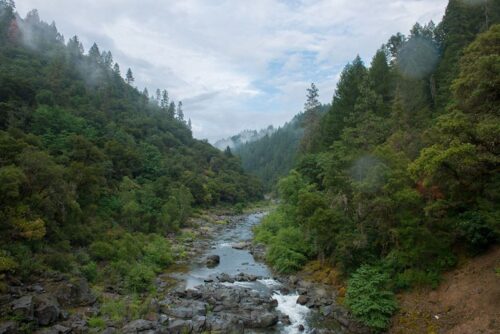 Currently, we are focusing our advocacy efforts on watchdogging and stopping the proposed Centennial Dam on the Bear River. We are working within County and State government systems to further our Growing Green for the Yuba campaign, advocating for watershed-friendly cannabis cultivation. We are supportive partners opposed to the proposed reopening of the Idaho-Maryland mine in Grass Valley, too. And, just last month, a lawsuit we filed against FERC with partners California Sportfishing Protection Alliance, Friends of the River, and the Sierra Club over Clean Water Act waivers was decided in our favor.
Currently, we are focusing our advocacy efforts on watchdogging and stopping the proposed Centennial Dam on the Bear River. We are working within County and State government systems to further our Growing Green for the Yuba campaign, advocating for watershed-friendly cannabis cultivation. We are supportive partners opposed to the proposed reopening of the Idaho-Maryland mine in Grass Valley, too. And, just last month, a lawsuit we filed against FERC with partners California Sportfishing Protection Alliance, Friends of the River, and the Sierra Club over Clean Water Act waivers was decided in our favor.
Probably our longest running advocacy focus has been around fish passage in the watershed. Rim dams block access for salmon and other threatened and endangered species to most of their historical habitat and that is no different for the Yuba. We aim to improve habitat these fish can currently access in the lower Yuba River, but also to advocate for volitional passage options into the upper reaches of the watershed before it’s too late.
SYRCL has a lot of ways for citizens to get involved. How are you engaging your members and volunteers this summer?
During the summer months, the South Yuba River has nearly 1,000,000 visitors recreate in its waters. Each summer, we run a River Ambassador program where staff and volunteers are stationed at our major river crossing on the weekends. 2022 is our 11th season on the river. The River Ambassadors talk to visitors 1:1 about how to recreate responsibly, safely, and have a great time. We train folks to use invitational rhetoric focused on several main talking points such as no fires/bbq grills, pack it in, pack it out, pick up after your pet, and not to bring glass to the river. This summer, our volunteers have spoken to more than 25,000 visitors!
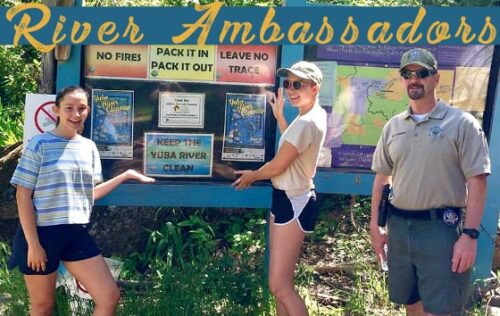 The “river season” closes with our annual Yuba River Cleanup—this year happening Sept. 10-17. This is another way close to 800 volunteers show their love for the watershed. This year is our 25th anniversary cleanup and we are celebrating with a volunteer appreciation party at Bridgeport State Park the afternoon of the 17th for all participants. There are many other ways for volunteers to get involved year-round and not all are event-focused.
The “river season” closes with our annual Yuba River Cleanup—this year happening Sept. 10-17. This is another way close to 800 volunteers show their love for the watershed. This year is our 25th anniversary cleanup and we are celebrating with a volunteer appreciation party at Bridgeport State Park the afternoon of the 17th for all participants. There are many other ways for volunteers to get involved year-round and not all are event-focused.
For the last 21 years, the South Yuba River Citizens League (SYRCL) has coordinated a revolving group of dedicated, environmentally conscious, river-loving volunteers in monitoring the water quality of the Yuba watershed. Almost every month, these River Monitors, ranging in age from high school students to senior citizens, visit 35 sites along the watershed to measure water quality parameters such as water temperature, dissolved oxygen, pH, turbidity, and conductivity, while also monitoring for the presence of sensitive and invasive species, and occasionally testing for bacteria, nutrients, and toxic metals.
Then, in February, we’ll produce the 21st annual Wild & Scenic Film Festival, which we could never pull off without the support of all of our dedicated volunteers. There are no shortage of ways for volunteers to engage in our work. And, our impact of our work wouldn’t be nearly as great were it not for our incredible volunteers.
Tell us about your work restoring salmon on the lower Yuba River.
During the Gold Rush era, hydraulic mining sediment blasted from the mountains flooded the lower Yuba River covering hundreds of acres of habitat under rocks and sediment. An estimated 640 million cubic yards of sediment entered the Yuba River – that’s about double the amount of earth removed to carve out the Panama Canal. In 1995, the US Fish and Wildlife Service established its Anadromous Fisheries Restoration Program, whose focus is to increase naturally produced populations of anadromous fish in California’s Central Valley streams on a long-term, sustainable basis.
In 2010, SYRCL embarked on the first restoration project in the lower Yuba—many were ready to write off this region as a loss, but we had a different vision. Five acres of plantings in cobble took place at Hammon Bar and this “proof of concept” project was a success! The willows and cottonwoods took off, collected fine sediments, welcomed natural recruitment, and now provide habitat where only rock existed before. With more than ten years of monitoring, we see greater than 60% survival rate of the original plantings. This project laid the groundwork for subsequent projects that now have or will restore greater than 300 acres—with more to come.
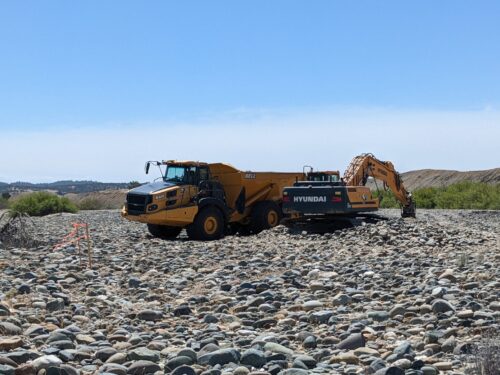 In 2016, SYRCL began the journey to plan and fund restoration on 42 acres of the part of the Lower Yuba River known as Long Bar. Most of the restoration process will consist of removing approximately 350,000 yards of hydraulic mining debris in order to restore optimal spawning conditions for spring run Chinook and Central Valley Steelhead Trout by bringing the floodplain down to where the water is and then planting along the riverbanks in order to jumpstart the food chain. The goal is to re-establish dynamic equilibrium. We’re hoping that this work will be completed in October of 2022. The next phase, of this project is being planned—another adjacent 100 acres are slated for restoration.
In 2016, SYRCL began the journey to plan and fund restoration on 42 acres of the part of the Lower Yuba River known as Long Bar. Most of the restoration process will consist of removing approximately 350,000 yards of hydraulic mining debris in order to restore optimal spawning conditions for spring run Chinook and Central Valley Steelhead Trout by bringing the floodplain down to where the water is and then planting along the riverbanks in order to jumpstart the food chain. The goal is to re-establish dynamic equilibrium. We’re hoping that this work will be completed in October of 2022. The next phase, of this project is being planned—another adjacent 100 acres are slated for restoration.
Currently, a spawning habitat project at Rose Bar is on deck, as well as efforts to craft a more comprehensive restoration design for the whole of the lower Yuba. The Hallwood project, of which SYRCL is a partner, needs to be mentioned, too. Another 150 acres of restoration, ideal for salmon and steelhead rearing habitat is in the works. Phases 1 and 2 are complete and before the equipment had even left the project area, fish were swimming in newly created side channels.
We don’t do this work alone. We have a team of folks working together on planning and implementing these projects in the lower Yuba, such as Yuba Water Agency, cbec eco engineering, and Cramer Fish Sciences. We have found great partners in the landowners such as Teichert Materials, Western Aggregates, and SRI. And incredible financial support from local, state and federal agency partners.
SYRCL has also been working on restoring meadows. What projects are you working on?
SYRCL began meadow restoration back in 2011 with the Loney Meadow Restoration project, in partnership with the Tahoe National Forest, to assess meadow conditions, restore aspen habitat, improve the interpretive trail, improve stream habitat, and monitor greenhouse gas emissions and carbon sequestration. Healthy meadows help improve plant and wildlife habitat, recharge groundwater, increase carbon sequestration, and capture snowmelt— releasing it slowly throughout the drier months of the year. In 2018, SYRCL successfully restored the 46-acre Deer Meadow and 30-acre Beartrap Meadow.
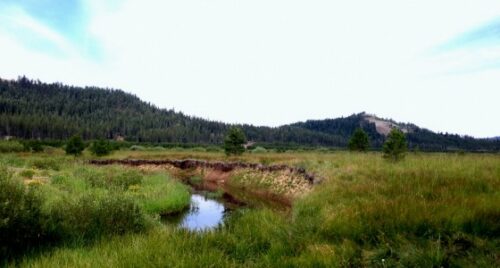 SYRCL recently began restoration for a 130-acre complex of meadows in the North Yuba watershed last year called the Haskell Complex. For Haskell Headwaters Fen, Chapman Saddle, and Freeman Meadow, SYRCL plans to use an ecological-process-based approach to restoration, integrating tools such as beaver dam analogues to assist the system in aggradation and floodplain reconnection.
SYRCL recently began restoration for a 130-acre complex of meadows in the North Yuba watershed last year called the Haskell Complex. For Haskell Headwaters Fen, Chapman Saddle, and Freeman Meadow, SYRCL plans to use an ecological-process-based approach to restoration, integrating tools such as beaver dam analogues to assist the system in aggradation and floodplain reconnection.
And, just this year, SYRCL broke ground on Phase One for restoration of the well-known Van Norden Meadow (Yayalu Itdeh in Washoe) in partnership with Tahoe National Forest. The 485-acre meadow is located at the headwaters of the South Yuba River. The restoration project is currently predicted to take two years and will include filling in the deep channels that are vulnerable to and perpetuate erosion, removing and thinning encroaching conifers, improving willow and aspen habitat, creating beaver dam analogs, and removing invasive species.
SYRCL has been active for 39 years in the Yuba watershed. What accomplishments are you most proud of?
I am most proud of the fact that SYRCL continues to be a trusted voice in the community when it comes to environmental issues. Entering our 40th year as an organization gives us a certain hard-earned credibility. Our community knows that we are here and “at the ready” to thoughtfully engage with issues as they arise that affect our watershed.
I am proud of the way that we have built coalitions and partnerships embracing all sorts of entities and organizations towards common goals. Through those coalitions, we have also been able to make big investments in our community for resiliency in the face of climate change and help ensure a sustainable water future.
Learn more about SYRCL at yubariver.org


